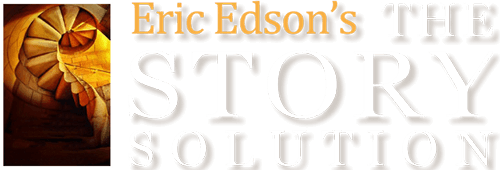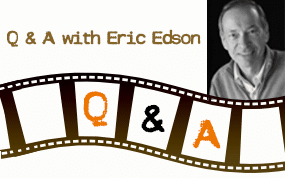
Erica Byrne
SCREEN AND TV WRITER
“Demystifies storytelling and lays out a clear path to a Hollywood sale”

Jessica Davis Stein
NOVELIST
“Like discovering a new continent. May well be the best cure for writer’s block ever written”
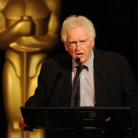
Tom Rickman
ACADEMY AWARD-NOMINATED SCREENWRITER
“Remarkable. Strikes off into new territory”
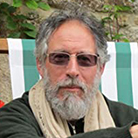
Michael Wiese
PUBLISHER & FILM DIRECTOR
“A brilliant presentation…tremendously valuable to writers everywhere”

Michael Peretzian
SENIOR VP WILLIAM MORRIS AGENCY
“Laser-sharp insight. I could not imagine a more thoughtful and thorough analysis of screenwriting”

Steve White
PRESIDENT OF FEATURE FILMS, NEW WORLD ENTERTAINMENT
“The Rosetta Stone for translating story ideas into powerful screenplays”
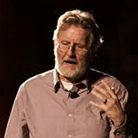
Michael Hauge
BEST SELLING AUTHOR, SCRIPT CONSULTANT
“Brilliant. Invaluable for writers and filmmakers. This book will change the way screenwriting is taught”

Robert Cartland
PRO SERIES PROFESSIONAL SCREENWRITING PROGRAM
“The insight regarding character, dialog and story are elegantly presented. The 23 actions paradigm provides a wonderfully clear blueprint for storytelling”

Jen Grisanti
STORY/CAREER CONSULTANT GRISANTI CONSULTING, INC
“Quenches your thirst to understand the story and how to make yours work better on every level. A must-read for screenwriters”
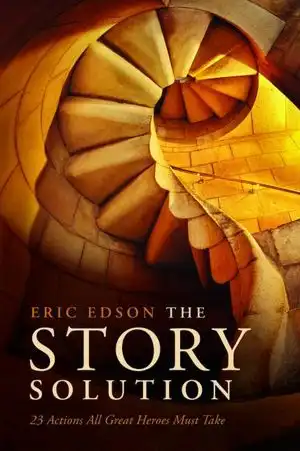
THE STORY SOLUTION is a powerful new book on screenwriting by Eric Edson that will help make your screenplay writing more enjoyable, effective and successful. This book offers a completely unique approach to writing a movie script that will keep producers, agents and audiences glued to their chairs. If you are seeking advice on writing a screenplay or looking for screenwriting tips, Eric Edson’s THE STORY SOLUTION is one of the best screenwriting books to consider for your library. Accomplished screenplay writer and university professor Eric Edson reveals the 23 actions used in every successful movie to create dynamic, three-dimensional heroes while linking together all parts of a captivating screenplay from first page to last. This book offers both new screenplay writers and scriptwriting professionals the tools necessary to construct a forceful emotional ride in their storytelling. Writing screenplays is not easy. Eric’s paradigm of HERO GOAL SEQUENCES has raised his book into Amazon’s top list of the best books on screenwriting. Clear and fun to read, THE STORY SOLUTION brings to light an innovative way to insure effective plotlines for both screenplays and novels.
Buy a copy at Amazon.com or MWP.com
With STORY SOLUTION, Eric Edson gives 20-23 (no less than, no greater than) steps that your protagonist must make to have a clear, tight, meaningful story. Don't worry, there's plenty of room for creativity; just check any of your favorite movies---they ALL follow these steps in one way or another. ***FOR BEGINNING SCREENWRITERS: Please don't make the same mistake as me in buying over a dozen books on screenwriting. To be honest, there's more than OVER a dozen good books on screenwriting. But, as happened with me, it's easy to get into READING about writing instead of doing what writers do…….write. For this reason, to save you time and money, I strongly recommend purchasing this book AND Inside Story: The Power of The Transformational Arc (by Dara Marks). The two books give you the BIGGEST advantage in avoiding two of the biggest pitfalls: Weak structure (Story Solution) and deep, emotional story that hooks us from the beginning with CHARACTERS that we care about (Inside Story). I don't mean to recommend the additional book as a knock on SS; I just really find that SS does an EXCELLENT job on structure. Inside Story does an EXCELLENT job on THEME, which Marks blends AMAZINGINGLY into story. But, to return to SS: Over 80% of the screenplays that have issues, poor structure and bland protagonists fill that pile. Make it to the next round of that famous screenwriting contest and purchase this book. Once again, a thoroughly enjoyable read. uabdu87@gmail.com
A must have book for a storyteller. I have a bunch of books about "story" but this is by far one of the best.
STOP! Save yourself countless wasted hours and don't start writing your screenplay until you've got your 23 Hero Goal sequences firmly in mind! Edson distills the classic screenplay paradigm into a series of steps every hero must take to reach their ultimate goal. This book will keep your narrative on track and accelerating towards an explosive conclusion. Unlike the stacks of novice screenwriting books that cover the same theoretical ground over and over, this book lays down an industry veteran's practical rules for overcoming the real-life screenwriting obstacles we all face.
Usual knowledge not found in any other screenwriting book I've read, and I've read many. An easy read with current examples in film.
As screenwriters, we often start with a great premise or an unforgetable hero. We know some of the conflicts our character must endure in his goal pursuit and the perfect climax. Often though, we are lost in Act II as we work out all the series of events that must take this character through his or her trials. This book will help screenwriters find their second act, and furthermore, help writers avoid passive heroes (a common problem). Are the steps easy to learn? As with anything, it requires a little dedication and effort. You have to approach the book with a sincere desire to learn why other screenplays have been successful. The book breaks down the individual hero goal sequences from numerous films. Edson shows how an active hero goes through phases in his journey, but never ceases to employ some type of effort to attain the goal. Once you analyze the pattern, easily found in many major films, you can see why a book like this was an essential addition to any discussion of film structure. Also, it's a good troubleshooting guide for rewriting a script. Edson's section on character will help you find the missing link between your character arc and his goal pursuit. Or perhaps you're having trouble establishing a midpoint, leading up to the finals strive towards your Act II turning point. Use the sequences to decipher where your screenplay leads your character and how. Then you'll be able to isolate how certain scenes might not build to this midpoint or the turning point in a dramatic way. Thus, this book proves an important text for any serious screenwriter looking for a solidly structured screenplay with active heroes and a high stakes, engaging goal pursuit.
Professor Eric Edsen, does a great job in presenting how best to write a film play ,or any fiction. He proposes a method that is at once difficult to write but easily understood in terms of how to do it. I am following his guidance and find it delightful, but know in my heart that it will take a while to get it right. Some of his writing processes may well apply to writing non-fiction as well. I highly recommend his book as it will certainly provide the insight from many years of writing experience and observations.
I don't like reading, but I love writing... Yes I know, those two don't typically work that way. However, I have read this book twice and review my notes in it every time I'm about to start working on a new idea for a screenplay.
Excellent. Every writer should have this book in his/her how-to library, preferably close by on his writing desk..
"Solution" alright ... for writers! Finally there's a book that provides essential tools for both beginner and expert writers alike. There are scores of screenwriting books out there (I've read most of them) but this one's approach should be read first before all of them. A cinematographer achieves focus via complex optics, lighting and lenses. For a writer to achieve focus, Mr. Edson explains how to critically focus on your hero's specific goals and purpose. To take your hero on an 'emotional' journey will definitely give you the writer (and reader/viewer) clarity like never before. "The Story Solution" has helped me to achieve better focus and structure with my screenwriting. I recommend that you read it, read it again and use it as a guide for all of your writing endeavors. Plus, it's fun!
This book is ment to be APPLIED. While some books you can simply absorb the necessary information and move on, here it is not the case. The template in Eric's paradigm is ment to be studied and mulled over. Mastery of its content applied to the vast quantities of scripts in identifying there story structure elements. Even if you've already bought into another system of screenwriting structure (a.k.a, John Truby) I would still strongly recommend giving it a chance. Plot is story, it's amazing to see how this system Eric has devised/found applies to so many (if not all good) stories. If you aren't Steven King and can't unbury the treasures of your story, or simply don't have the time. Invest in the formula - it won't be everything you need but it will point you to exactly where you need to be.
There are so many screenwriting books on the market, but there are few that bring a new approach to storytelling. This book will make you look at movies in a whole new way and give you the key understanding to help bring your ideas to life. If you know anything about screenplay writing, you're probably already aware of the 3 Act structure, blah, blah, blah...this book dives into the nuts and bolts as to the "how" and the "why". The author introduces us to Hero Goal Sequences, an approach I have found to be extremely helpful. Now, my piles and piles of notes of my scattered ideas now have the tools to become a successful screenplay.
If you've ever read a book on screenwriting, you know that you're nowhere without some sort of story map, some sort of guideline to keep your writing sharp, tight, and filled with meaning so that the reader/audience will be captured at once and will have no choice but to accompany you on the journey you've created. Many of these "maps" fall short of actually helping you stay on course, sequence by sequence, so that there are no story gaps. Eric Edson's "The Story Solution" is the real deal. It's the only toolbox you'll need to help you create a compelling story with characters that jump off the page and get you noticed as a writer. After all, isn't that what we're all looking for?
Makes sense. Have learned a lot as a writer from this.
Excellent book for writers.
This is a MUST READ for anyone out there wondering how to write a good screenplay. In today's world of too many screenplay books to choose from I'll make it easy for you - just read this one. It breaks things down simply and elegantly. There's a reason why some scripts are just okay and some scripts are truly great. This guy teaches you how to write the truly great kind. You will not be disappointed!!
I've had the honor of being taught in person by this man, and I'm so happy that this book has finally been released. The techniques and lessons that you will learn from this book are very valuable to any writer. Whether you're trying to break on the scene or you're an already established writer, I will guarantee that you'll learn something that you didn't know before. GREAT READ!!!
This is the best book on story writing I found. I've bought and read about 50 or so. THis is so precise in it's advice. The examples are so clear as well. It can be used almost like a checklist to see if you have all the elements you need to lift your story up and make people lean forward and want to know what happens next.
excellant!!! Gave me a good basis for story telling in a cinematic way and the steps to incorporate an exciting, intriguing story.
This book starts off some great how-tos I found very useful, and then it goes into structure, and I made notes on the entire book. I first read it, and then went back and wrote up notes on what I was learning. Wonderful book.
The work in this book should do away forever to any excuses you make not to write. Now you have the path forward laid out to you in the brilliant light of discovery. Edson's easy to read analysis fills in the gaps left by other great pioneers on story structure, like Syd Field, John Truby and Chris Vogler. Finally, you are shown what to do to make any story idea come alive. We are all benefited by this remarkable book. Go forward. Read and succeed.
What kind of a person actually dissects successful movies to identify their underlying structure? I'd say a scientist, which is an unusual way to characterize an artist. Yet, in my opinion, that's what Professor Edson certainly is. I thoroughly enjoyed his book and will carefully study it over the coming months to consider ways to improve scripts already written...and to outline stories yet to hit the page. This is a quite masterful work of art and science...and I'm serious about wanting to meet this author some day!
This book will change the way you view character, action, and theme. It's clear, precise, and easy to follow. The elements shared within the pages of this book are priceless - if applied correctly, you'll be well on your way to becoming an excellent screenwriter. I have used his paradigm, applied it to a script I'm currently working on, and have seen the difference -- it's night and day. I suggest you purchase this book straightaway - don't think about it, don't pass go, just buy it. Study it. Apply it.
After reading a variety of "How-To" books on screenwriting, I thought I knew a lot about screen story. I didn't. This is the only book that will walk you through the specific steps your hero must take in order for you to create a successful Hollywood script!
As an aspiring screenwriter, I've struggled with two aspects of the craft most, why do some characters engage us and other don't? Once you have your catalyst and act breaks, where do you go from there? Eric Edson's book is an invaluable solution to get you through the "fog" of figuring these things out for your story. While most screenwriting books only concentrate on the act breaks, Eric covers this and also guides you through everything that happens in between. Learning and knowing these steps really frees one up to concentrate on the story they actually want to tell. In addition, Eric demonstrates character traits all compelling characters exhibit, a great asset to keep your audience or reader engaged in your story. While many screenwriting books give you a compass of sorts, Eric provides a map that will help you avoid the swamps and pitfalls of the dreaded second act. In addition, he'll help you build your protagonist in a way that will keep him/her in the audience's hearts. I had the privilege of learning from some of Eric's graduate classes and The Story Solution in book form is the next best thing. With both classic and contemporary examples to illustrate the solution, I heartily recommend this book for any writer's tool box.
It has always been for me that by reading books such as "Story Solution" I gain a better understanding of myself and others. This book, more than any other, is helping me to write my screenplay. It is definitely required reading if your going to write any story.
As an aspiring screenwriter I found "THE STORY SOLUTION" by Eric Edson an amazing resource. This book is an easy read and very helpful. I'm going back to my first three screenplays and applying what I learned from, Eric to improve my stories.
A great book. The book to have for any writer.
I have been writing using Prof. Edson's theories (as contained in this long-awaited book) for the past 3 years. I can honestly say that it brought my writing to an entirely new level. I used his methodology to craft the story for my recently-released feature film, "
An incredible help in crafting stories. I have just been using this book for a few weeks and it is transforming my book in progress already. Thank you for the inspiration and support this gives. I recommend it highly! J Frost
The Story Solution shines a light on a formula hidden within Hollywood blockbusters and lays it out in a neat and simple way. Anyone from the beginners to professionals will walk away with great insight into what captivates an audience on screen and how to make sure that you don't forget to include it in your own work. There is no Ultimate Formula to writing Blockbusters but this is certainly a leap in the right direction.
I have many writing reference books on my shelf, but this one seems to be resonating better then the others. Maybe it's because of the many examples; I don't know, just know that I'm enjoying this one more then some of the others I've read.
Edson has unlocked a code that is universal for dramatic storytelling. There may be those who resist this elixir but for those who are open and imbibe the serum, they will undoubtably be transformed. This book is an absolute masterwork. I consider it THE book on screenwriting because it does the one thing that none of the other scholars do: help the writer organize their story with a universal foundation. Other books will try quick fixes and tricks to give the author plug and play options, or philosophies that aim to steer or inspire a writer. This book does ALL of that at once with this simple solution. The hero goal sequences are imbedded into our psyche and part of our universal consciousness. Edson has uncovered this and we are lucky he has shared it.
Really opened up the inner workings of narrative storytelling—I’m hooked. Now, I’m off to work with this little volume laying open while I type!
I've read a lot of books on writing. Story Solution is definitely one you want to consider adding to your library. While, yes, it might lead you into the dangerous realms of formulaic writing; it is packed full of integral writing advice. All the points you need to consider, as a writer of novels or screenplays. Story Solution is easy to understand. It delivers on its promise of offering a solution to any writing problem by showing you how to structure a story that works. All the necessary parts of a story you NEED to consider are touched upon here. Dozens of movie plots are used as examples. If nothing, the book is an interesting examination of movie plots. Put it this way: if you follow this book's advice, you'll probably start pumping out stories people would want to read pretty quickly. Stories that make sense, follow a cohesive structure, and present interesting characters. Whether you read this book or not, check out these excellent guides for writers: 1) Lessons from a Lifetime of Writing by David Morrell (Newest edition has a slightly different title.) 2) On Writing by Stephen King 3) Self-Editing for Fiction Writers 3) Outlining Your Novel by Weiland 4) Scene & Structure by Bickham 5) Any of Chuck Weltig's books on writing 6) Anne Rice's advice on writing from her Youtube page These should get your brain-engine overheating. Enjoy. 🙂
Another helpful angle on screenwriting. I found it helpful for focusing what happens between the well-known way stations. Worth the read.
Eric Edson has uncovered a remarkable truth. His book is fresh, exciting, and groundbreaking. The concept of "Hero Goal Sequences" is incredibly insightful, and presents a process which must change the way screenwriters, agents, producers, and executives conduct business. His observations demystify the essence of successful film, and provide a common language whereby those involved in both the creative and business aspects of film-making may finally understand each another. This is a must read. I am convinced that it is to modern storytelling what Joseph Campbell's "The Hero with a Thousand Faces" was to his time. It will be studied for years to come. Bravo, Mr. Edson. The crowds cheer a shiny, new chariot in what used to be a tired, dusty arena.
Extremely helpful, in all regards and at all stages.
Whether you're a novice, or seasoned professional, "The Story Solution: 23 Actions All Great Heroes Must Take" is a must have in your arsenal. Easy to understand, full of examples, and guidance from an established juggernaut in the industry. I highly recommend this book...no, this treasure.
the book is well written and shows the way to build a great script. If you have a great idea, buy the book and start writing, the book will show you the way.
This is one of the best screenwriting books I own, (and I own a lot of them). It gives you an in depth understanding of the necessary story elements to write a successful script. If you are a movie goer, you will find yourself nodding your head, as you recognize the ideas, elements and devices that each good movie you have seen possesses, but is somehow hard to recognize as you sit down at to write yourself. I highly recommend this book.
Unless you're Robert Towne, William Goldman or Paddy Chayefsky, this is a book you absolutely need to understand how stories on the screen are structured and impactive.
I had a lot of material to somehow shoehorn into an action plot with multiple subplots. External and internal journies with character growth. This book enabled me to break the story down to hero sequences that generated action and emotional character arcs. A big help
Eric Edson's book does a masterful job of taking a difficult and complex subject like story structure and breaks it down into an easy to comprehend rubric. I especially love the plethora of examples from past films showing his "Hero Goal Sequences" at work. Sure, Syd Field can tell you roughly where your act breaks could be in your script, but Edson's book delves deeper into the nitty-gritty of the path your hero needs to take to achieve their goal, and he does it wonderfully.
Mr Edson theory about screenplay structure is one of the most important tools every screenplay writer should know, very simple to understand. I bought his book and watched all his YOUTUBE Film Courage virtual classes and personal interviews; he is one of the best teachers I have ever had.
This book found me in a book store. I was drawn to it for some reason. When I opened it up, I read a paragraph that gave me the insight I look for in a writing book. Like most writers, my main characters suffer from "the world affecting them" instead of them "affecting the world". This book has helped me understand what it means to be a dynamic main character. We all know there are tons of books out there that claim to have the goods and few of them do. This one has it. But you have to really study it and read it thoroughly because these are complex ideas. If you take the time and really dive deep into this book, I think you will find that it's depth is as limitless as your creativity.
This is a book about plotting a decent story, specifically a screenplay (although the technique works equally well with any sort of story). Part One: Laying the Foundation gives the aspiring writer pointers on how to create a sympathetic hero, how to evoke emotions in your audience, and how to create a dynamic story with believable conflict. Part Two: Creating your Characters covers creating characters based on powerful mythic archetypes and writing dialogue that is integral to advancing your story. These first two sections of the book are full of helpful advice. But the next two sections are the real meat of the book: Part Three: Building Story Structure and Part Four: The Power of Hero Goal Sequences. Part Three covers Basic Screen Story Structure and The Character Growth Arc and Part Four covers The Power of Hero Goal Sequences in great detail - in amount of pages Part Four takes up about half the book. Yes, some of the stuff on basic structure has been said before in other books on plotting and screenwriting. But rarely so clearly and what sets "The Story Solution" apart from others is the amount of detail and the number of examples that Mr Edson uses to illustrate his points. For example, Chapter 14 takes the movie "Up" and breaks it down into the Hero Goal Sequences so the student can clearly see all the mechanics at work. Also the way each of the Hero Goal Sequences is broken down into the kind of events that might happen in each and why, with at least two examples from film scripts for each point. For the student this is pure gold. Didn't get the point after one example? Here's another. Can't see how it all fits together? Check out the movie plan of "Up" at the end of the book broken down into its component parts. The student is not left feeling stupid because she can't work out what the author means because Eric Edson doesn't just make a statement without backing it up. He doesn't assume you'll get it - he first tells you the point then shows it to you in action. Like another reviewer elsewhere I was irritated by the registered trademark symbol that occurred after every instance of the phrase "Hero Goal Sequences". It distracted me and was unnecessary. But that was a small thing compared to the usefulness of the book as a whole. Eric Edson knows his stuff and, what's more to the point, is great at communicating that to an audience. I recommend this book highly for anyone who wants to become a better writer.
Eric Edson has unlocked a formula any aspiring/professional screenwriter or revisionist must have in their skill set. Many screenplays have great stories, but lack the pacing required to become a major Hollywood film. These proven 23 actions are seen time and time again throughout many major box office hits such as Die Hard and Collateral (to name a few). By using this method, any story will keep the viewer/reader on the edge of their seat wanting to know what will happen next. Hats off to Eric Edison for discovering a beautiful solution to one of the most common problems for any major Hollywood screenplay.
In The Story Solution, Eric Edson presents a clear, concise, step-by-step manual that will help you to craft your best screenplay yet. There are A LOT of books out there that claim to make you a better screenwriter. This one actually lives up to its promise. It is a fantastic guide to help you through the herculean task of creating a page-turning, commercially viable screenplay. I highly recommend that you purchase it. You will be thrilled with the results you get.
Heroes. They drive your story. Whether their name is Shrek, Luke Skywalker or George Bailey - they are the characters the audience relates to, understands and becomes as the story progresses. You cannot cut your hero short. They MUST accomplish their goals. Eric Edson does a fantastic job of going over the basics of screenwriting (structure, dialogue, arc, heroes v. villains) before diving into the main concept of his book: The Hero Goal Sequence (c). This is where this book takes off. Diving headlong into the reality of heroes, Mr. Edson explores the core 23 Steps your hero MUST take to accomplish their goal. Using the Hero Goal Sequence (c) paradigm - Mr. Edson defines for the reader/writer the steps it will take for your hero to accomplish his/her goal. He then breaks them down per act, giving the reader/writer a clear understanding of what must happen when and where and for how long. In all the books I've read, I've not seen this definition taken to the lengths that Mr. Edson takes it. And as much the definition may cause others to pause - he gives plenty of examples to hold up his side of the argument. That your hero MUST take these steps to accomplish their goal(s), thus creating a story that resonates and has impact beyond just the final credits. And this is where the book excels. Using these examples as concrete evidence, it's hard to argue the points when he makes them so clearly. Then, taking it one step beyond, he uses exercises to help the reader/writer to really understand the concepts and take their hero(es) to another level. Many books on screenwriting will gloss over, or just lightly touch, on the hero's journey - Eric Edson dives in with a depth rarely seen. The Story Solution takes apart the journey with thoughtful insight and relevance - you'll be amazed at what you find.
The best book I've ever bought!

